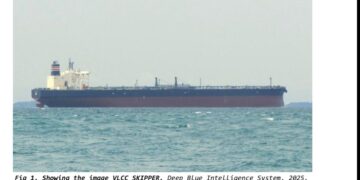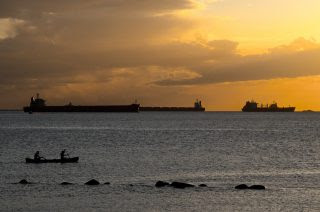Total vessel
operating costs in the shipping industry are expected to rise by 2.7% in 2018
and by 3.1% in 2019, according to a a survey by Moore Stephens.
operating costs in the shipping industry are expected to rise by 2.7% in 2018
and by 3.1% in 2019, according to a a survey by Moore Stephens.
Namely, drydocking is the cost category likely to increase most
significantly in both 2018 and 2019, by 2.1% and 2.3% respectively, while
expenditure on repairs and maintenance is to rise by 2.0% in 2018 and by 2.3%
in 2019.
significantly in both 2018 and 2019, by 2.1% and 2.3% respectively, while
expenditure on repairs and maintenance is to rise by 2.0% in 2018 and by 2.3%
in 2019.
The survey also revealed that the outlay on crew wages is expected
to increase by 1.3% in 2018 and by 1.9% in 2019, with other crew costs thought
likely to go up by 1.5% in 2018 and by 1.8% in 2019.
to increase by 1.3% in 2018 and by 1.9% in 2019, with other crew costs thought
likely to go up by 1.5% in 2018 and by 1.8% in 2019.
Moore Stephens said that the predicted overall cost increases were
once again highest in the offshore sector, where they averaged 4.1% and 4.2%
respectively for 2018 and 2019. By way of contrast, predicted cost increases in
the bulk carrier sector were 1.8% and 2.6% for the corresponding years.
Operating costs for tankers, meanwhile, are expected to rise by 2.4% in 2018,
and by 2.9% the following year, while the corresponding figures for container
ships are 4.2% and 3.8%.
once again highest in the offshore sector, where they averaged 4.1% and 4.2%
respectively for 2018 and 2019. By way of contrast, predicted cost increases in
the bulk carrier sector were 1.8% and 2.6% for the corresponding years.
Operating costs for tankers, meanwhile, are expected to rise by 2.4% in 2018,
and by 2.9% the following year, while the corresponding figures for container
ships are 4.2% and 3.8%.
Overall, the cost of new regulation was identified as the most
influential factor likely to affect operating costs over the next 12 months, at
23%, up from equal third place at 15% last year. 18% of respondents
identified finance costs in second place, down from 20% and first place last
year. Competition ranked in third place at 15% as it had last year. Meanwhile
crew supply fell to 12% compared to 19% and second place in last year’s survey.
influential factor likely to affect operating costs over the next 12 months, at
23%, up from equal third place at 15% last year. 18% of respondents
identified finance costs in second place, down from 20% and first place last
year. Competition ranked in third place at 15% as it had last year. Meanwhile
crew supply fell to 12% compared to 19% and second place in last year’s survey.
On a more general level, respondents voiced concerns about
environmental issues, trade wars, the cost of securing finance, and the global
economic recession, all of which were perceived to have the potential to result
in increased operating costs.
environmental issues, trade wars, the cost of securing finance, and the global
economic recession, all of which were perceived to have the potential to result
in increased operating costs.
“One year ago, expectations of
operating cost increases in 2018 averaged 2.4%, so the increase now in that
expectation to 2.7% must be regarded as sobering – if not unexpected –news,” Richard Greiner, Partner, Shipping and Transport, said.
operating cost increases in 2018 averaged 2.4%, so the increase now in that
expectation to 2.7% must be regarded as sobering – if not unexpected –news,” Richard Greiner, Partner, Shipping and Transport, said.
The latest predicted increases, whilst a cause for concern, “should not unduly surprise or concern shipping, an industry which
has seen – and in many cases endured – much larger increases during the past
decade,” Greiner added.
has seen – and in many cases endured – much larger increases during the past
decade,” Greiner added.
World Maritime News.






























































